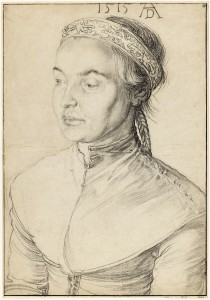
François Boucher (French, 1703–1770), “The Triumph of Venus,” 1740, oil on canvas. Nationalmuseum, Stockholm.All photos by Cecilia Heisser / Nationalmuseum.
NEW YORK CITY — The Nationalmuseum, Sweden’s largest art institution, is collaborating with the Morgan Library & Museum to bring more than 75 masterpieces from its collections to New York in a new exhibition opening February 3. The show features work by artists such as Albrecht Dürer, Raphael, Peter Paul Rubens, Rembrandt van Rijn, Antoine Watteau and François Boucher, and is the first collaboration between the two institutions in almost 50 years. “Treasures from the Nationalmuseum of Sweden: The Collections of Count Tessin” will be on view through May 14.
The Nationalmuseum’s core holdings were assembled by Count Carl Gustaf Tessin (1696–1770), a diplomat and one of the great art collectors of his day. The son and grandson of architects, Tessin held posts in Vienna, Berlin and Paris, where he came into contact with the leading Parisian artists of the time and commissioned many works from them. By the time he left the city in 1742, he had amassed an impressive collection of paintings and drawings.

Annibale Carracci (Italian, 1560–1609), “Nude Study of a Young Man Lying on his Back,” circa 1583–85, red chalk. Nationalmuseum, Stockholm.
Among the 14 paintings in the exhibition are three commissioned by Count Tessin and exhibited at the 1740 Parisian Salon. Chief among these is Boucher’s “Triumph of Venus,” which is making its first journey to North America. Other paintings include Jean-Baptiste Oudry’s “Dachshund Pehr with Dead Game and Rifle” and a “Portrait of Count Tessin” by Jacques-André-Joseph Aved, in which the collector is shown among his art, books and medals. Six works by Jean-Siméon Chardin, notably the “Morning Toilette,” complete the group.
The drawings in the exhibition include works by Italian masters such as Domenico Ghirlandaio, Raphael, Giulio Romano and Annibale Carracci. Northern European artists are represented by Dürer, Hendrick Goltzius, Peter Paul Rubens, Rembrandt and Anthony van Dyck, among others. The French drawings begin with Primaticcio and practitioners of the Fontainebleau school and include works by Jacques Callot and Nicholas Poussin, Watteau, Boucher and Chardin.
Carl Gustaf Tessin is distinguished among his Swedish contemporaries: he was a politician, courtier, diplomat, public official, artist, writer, historian, collector and philosopher. Carl Gustaf was an amateur of the arts from a young age, an enthusiasm fostered by his early travels through Europe, including a first visit to Paris in 1715–16, a brief return in 1718–19, and another trip with his new wife Ulla in 1728–29. Following his father’s death in 1728, Carl Gustaf inherited a substantial collection of paintings, drawings and prints and the position of surintendant (surveyor) at the royal palace.
Tessin served in Paris from 1739 to 1742 as Sweden’s unofficial ambassador. Driven by a passion for art and elegant living, he commissioned and purchased paintings and drawings, assembling a notable collection. The costs of maintaining his lifestyle in Paris would, however, leave him with lasting financial difficulty after his return to Stockholm.

Albrecht Dürer (German, 1471–1528), “Portrait of a Young Woman with Braided Hair,” 1515, black chalk and charcoal. Nationalmuseum, Stockholm.
In 1749 Tessin was forced to sell part of his collection of paintings to the royal family of Sweden as his financial situation deteriorated. He sold 243 paintings to King Frederick I, who then presented them to his daughter-in-law, Crown Princess Louisa Ulrika, Tessin’s confidant. The following year, Tessin was compelled to sell the majority of his drawings to Louisa Ulrika’s husband, who had succeeded his father as King Adolf Frederick.
This series of sales to the royal family helped form the core of the royal collection of old master drawings and paintings. Most of the collection was kept in the Royal Palace, Stockholm. Some paintings were kept at nearby Drottningholm Palace, Louisa Ulrika’s favored retreat.
Adolf Frederick died in 1771 and was succeeded by his son, King Gustav III, an acclaimed patron of the arts. Gustav’s ambition was to establish a royal collection open to the public. In 1775, he created the Royal Library, which served as a repository for the king’s collection of drawings. After Gustav’s assassination in 1792, a Royal Museum — primarily a collection of paintings and sculpture — was founded in his memory. These two collections would eventually form the core of the Nationalmuseum’s holdings. In the 1860s, works were inventoried and transferred to the museum: the drawings in 1863, followed by the paintings in 1865. The Nationalmuseum opened its doors in 1866.
Closed for renovation since 2013, the Nationalmuseum will reopen in 2018 with state-of-the-art climate control throughout its historic 1866 building.
The Morgan Library & Museum is at 225 Madison Avenue, at 36th Street. For further information, 212-685-0008 or www.themorgan.org.














